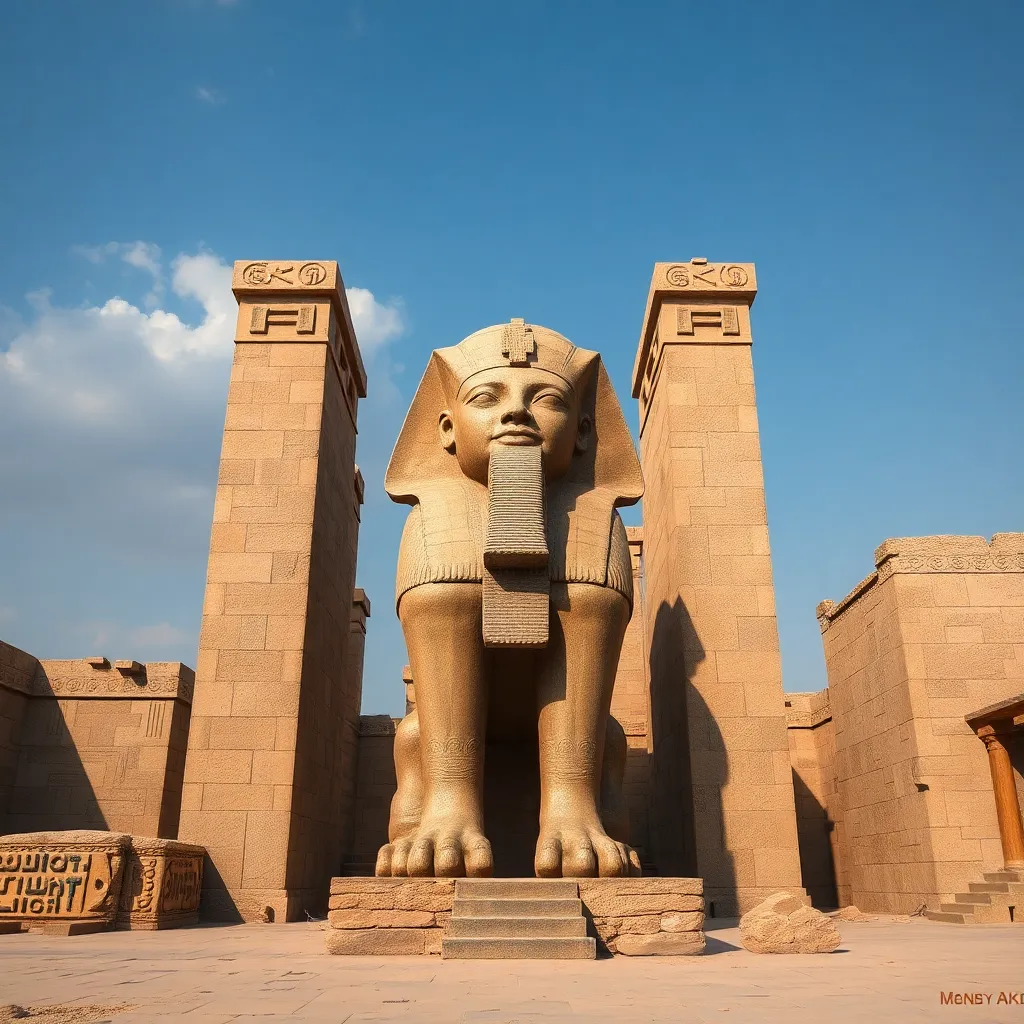The Lamassu in the Ancient City of Ur: Exploring its Role in Sumerian Society
Introduction to the Lamassu
The Lamassu is a mythical creature from ancient Mesopotamian culture, typically depicted as having the body of a bull or lion, the wings of an eagle, and a human head. This hybrid figure served multiple roles, primarily as a protective deity, guarding important structures and symbolizing strength and divine protection. The origins of the Lamassu can be traced back to the early Sumerian civilization, where it held significant cultural and religious importance.
Historically, the Lamassu embodied the amalgamation of various cultural influences present in Mesopotamia, reflecting the society’s belief in the protection offered by divine entities. These figures often adorned the entrances to palaces and temples, serving both a decorative and a protective purpose, and symbolizing the divine authority of the rulers who commissioned them.
The City of Ur: A Sumerian Marvel
Ur, located in present-day Iraq, was one of the most significant cities of ancient Sumer and played a vital role in the development of early civilization. Established around 4000 BCE, Ur was strategically situated near the Euphrates River, facilitating trade and commerce. It became a hub of economic activity, connecting various regions and cultures.
The historical significance of Ur extends beyond its geographical advantages. As a center of governance, it housed temples and ziggurats, which were not only religious sites but also administrative centers. The city was renowned for its advanced urban planning, featuring a grid layout, sophisticated drainage systems, and impressive architectural achievements. Ur’s role as a religious center was underscored by its devotion to deities such as Nanna, the moon god, whose temple dominated the city’s skyline.
Symbolism of the Lamassu
The Lamassu carries rich symbolism, evident in its iconography. Typically, the Lamassu is portrayed with a muscular body, representing strength, and its wings signify swiftness and divine intervention. The human face reflects wisdom and authority, often depicted with a beard and elaborate headdress, emphasizing the connection between the divine and the earthly realm.
In Sumerian mythology, the Lamassu served as a protective deity, warding off evil spirits and ensuring the safety of the structures it adorned. Their presence was believed to invoke blessings and protection, making them essential components in both religious and secular architecture. The Lamassu’s protective role highlights the Sumerians’ belief in the power of the divine to influence daily life and the importance of seeking divine favor.
Architectural Significance of Lamassu Installations
Lamassu statues were strategically placed at the entrances of significant buildings such as temples, palaces, and city gates, serving as sentinels of protection. The architectural context of these installations was crucial, as they were often positioned to greet visitors and ward off malevolent forces. The grand scale and intricate designs of the Lamassu contributed to the overall imposing nature of the structures they adorned.
Artistic techniques used in creating Lamassu included the use of limestone and alabaster, which allowed for detailed carvings and a lasting finish. These statues were often life-sized or larger, showcasing the skill of Sumerian artisans. The combination of three-dimensional forms and bas-relief techniques created a dynamic visual effect, emphasizing the power and majesty of these mythical creatures.
The Lamassu’s Role in Sumerian Religion and Rituals
In Sumerian society, the Lamassu were not merely decorative elements; they played an integral part in religious practices and rituals. They were believed to act as intermediaries between the divine and human realms, providing a sense of security to worshippers and rulers alike. During rituals, offerings might be made at the feet of Lamassu statues, seeking protection and blessings for the community.
Their presence in religious ceremonies often symbolized the invocation of divine protection during significant events, such as coronations and festivals. The Lamassu’s role in these rituals underscored their importance in maintaining the social and religious fabric of Sumerian society.
Political and Social Implications of the Lamassu
The Lamassu also had profound political and social implications in Sumerian culture. They represented the power and authority of the ruling class, serving as a reminder of the divine right to rule. Kings would often commission Lamassu statues to enhance their palaces, projecting an image of strength and divine favor.
In this way, the Lamassu became symbolic of kingship and state ideology. Their imposing figures not only protected the physical spaces they adorned but also reinforced the political narrative of the rulers, intertwining divine protection with authority and governance.
Legacy and Influence of the Lamassu Beyond Ur
The influence of the Lamassu extended well beyond the city of Ur, impacting subsequent cultures and civilizations. As empires rose and fell in Mesopotamia, the Lamassu became a symbol adopted by various societies, including the Assyrians and Babylonians. Their representations evolved, but the core symbolism of protection and strength remained constant.
In modern times, the Lamassu continues to inspire artists and architects. Its imagery is often referenced in contemporary art and design, showcasing the enduring legacy of this ancient symbol. Museums around the world strive to preserve Lamassu artifacts, highlighting their importance in understanding human history and cultural evolution.
Conclusion
The Lamassu played a multifaceted role in Sumerian society, serving as a protector, a symbol of divine authority, and a reflection of the cultural values of the time. Through their artistic representations and strategic placements in architecture, they encapsulated the beliefs and aspirations of the Sumerians.
Preserving and studying artifacts like the Lamassu is crucial for understanding ancient civilizations and their impact on modern culture. The Lamassu remains a powerful reminder of humanity’s quest for protection, strength, and connection to the divine, echoing through the ages as a testament to the rich tapestry of human history.



